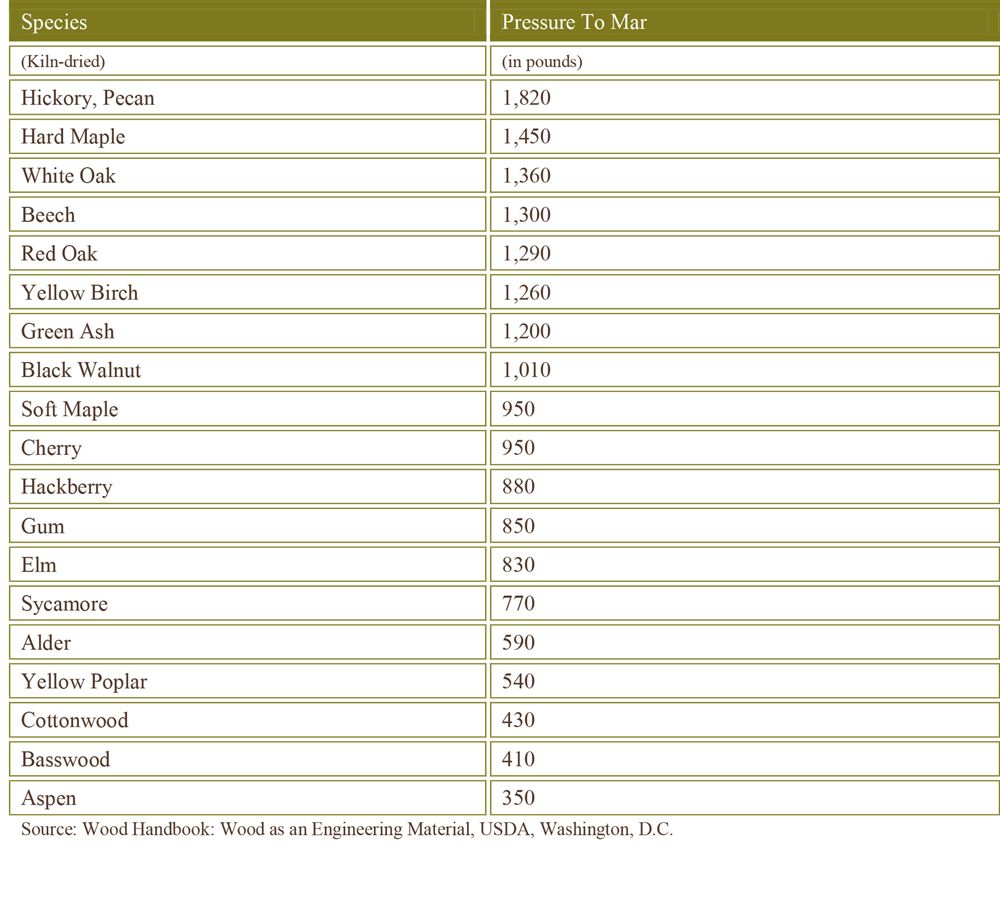An important and sometimes misunderstood aspect of defining wood as either hard or soft is that it has absolutely nothing to do with how hard the wood is. Instead, it has to do with the characteristics of the tree.
Although the terms hardwood and softwood are in no way related to the relative toughness of a given piece of wood, for the most part, hardwoods are usually harder than softwoods.
So how exactly do you classify how hard a piece of wood is?
The Janka Hardness Test.
Where Does the Janka Hardness Test Come From?
The most common way to classify and compare the hardness of various woods is the Janka Hardness Test, an industry standard since 1906.
The test involves measuring the average amount of force required to “embed a .444-inch steel ball to half its diameter” into the wood. Most of the time, the numbers you’ll see quoted here are referring to side hardness. The Janka test was the brainchild of Gabriel Janka who created it after being asked by the Department of Agriculture to find an “objectively and scientifically” sound way to measure the hardness of a piece of wood.
The Janka Hardness Test is a good measurement technique to determine the relative hardness across hardwoods.
What is the Janka Rating System Anyway?
When in doubt about the type of wood to select for your cabinetry, flooring, furniture or millwork project, refer to the Janka Rating System, which measures the relative hardness of woods.
The hardest commercially available hardwood is hickory, and it is five times harder than aspen, one of the “soft” hardwoods. And while this example lists just some of the most popular hardwood species, there are hundreds of varieties, representing the North American hardwood population.
Hardness is an important factor, and hardness varies for each species. The Janka Scale of Hardness is an excellent tool to help identify appropriate choices.
